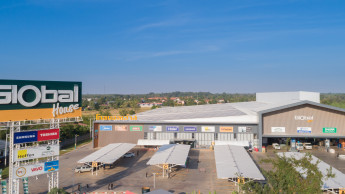Positive balance for Asia
The market volume in North America fell off by two per cent to € 2.7 bn in 2003. As a consequence, this region had to give up its position as the biggest individual market and hand it over to Europe. In volume terms, however, it still remains number one.
The market volume declined by one per cent to € 2.9 bn in Europe. This development is being put down to the weak growth of the gross national product, the persistently poor economic situation of the construction industry, and the reduction of inventories implemented by retailers. What is more, other suppliers have also had a considerable influence on the European market, which continues to show a heterogeneous picture. Satisfactory growth rates were achieved by the United Kingdom, Spain and Greece, whereas the negative trend of recent years continued in Germany. The German market volume declined in terms of value by eleven per cent to € 513 mio, whereas the quantity sold increased by one per cent to twelve million units.
The end result for power tools in Asia turns out to have been positive overall in 2003. The market volume rose by two per cent to E 1.1 bn. While the Japanese market is at a standstill, the rest of Asia – and China in particular – is recording strong growth.
The market in Latin America was also on the decline: sales of power tools went down by two per cent to € 0.2 bn. The region’s complicated economic and political situation was a crucial factor in this development.
Medium-term growth
Bosch expects an overall positive tendency for the power tools market in the next few years. An annual average growth rate of between three and four per cent is taken as the basis for growth in terms of quantity. The prediction also expects that the global market will once again see moderate growth in terms of value this year after currency adjustments. In quantitative terms, an increase of around four per cent is to be reckoned with. The impulses for growth in Europe will emanate from the eastern Europe markets in particular. Bosch also sees market opportunities in Asia.
Collapse of prices in Germany
Evident in the German market is a continuing process of falling power tool prices, which is being attributed to the great number of imported products in the lowest price segment. Bosch regards the poor growth in terms of quantity as an indication that users have become so accustomed to the low price labels on discount tools that they can hardly be tempted by special offers any more. The two-figure decline of the market volume in value terms over the previous year is having a negative effect on retailers’ results in this product category. This tendency has been reinforced by discounting and price battles initiated by various retailers on an unprecedented scale.
Within the last few years the average price of € 69 for machines in superstores in Germany, which was already low according to Bosch, has fallen by nearly one-third to € 45. Specialist dealers, on the other hand, have succeeded in increasing their average price to € 181, which corresponds to a rise of 14 per cent. This means that the superstores have to sell four power tools for the sale of one tool in the specialist trade in order to keep up in terms of value.
The average price of no-name products and private labels has gone down from € 36 to € 24 in the large-format stores. The average price for branded products remains constant at € 81 by contrast. The quantity of branded power tools sold, however, has gone down from 72 per cent to 37 per cent, according to data from Bosch’s market researchers. Which means their share of sales has shrunk as well. Nevertheless, the superstores with their 37 per cent of machine sales achieve 66 per cent of their turnover through power tools.











